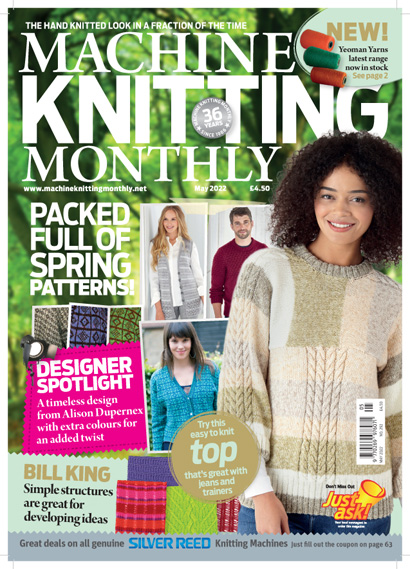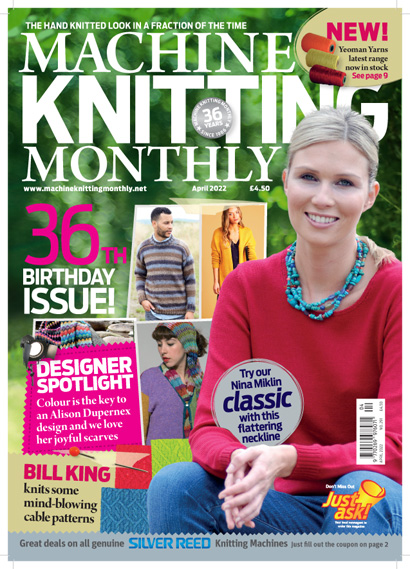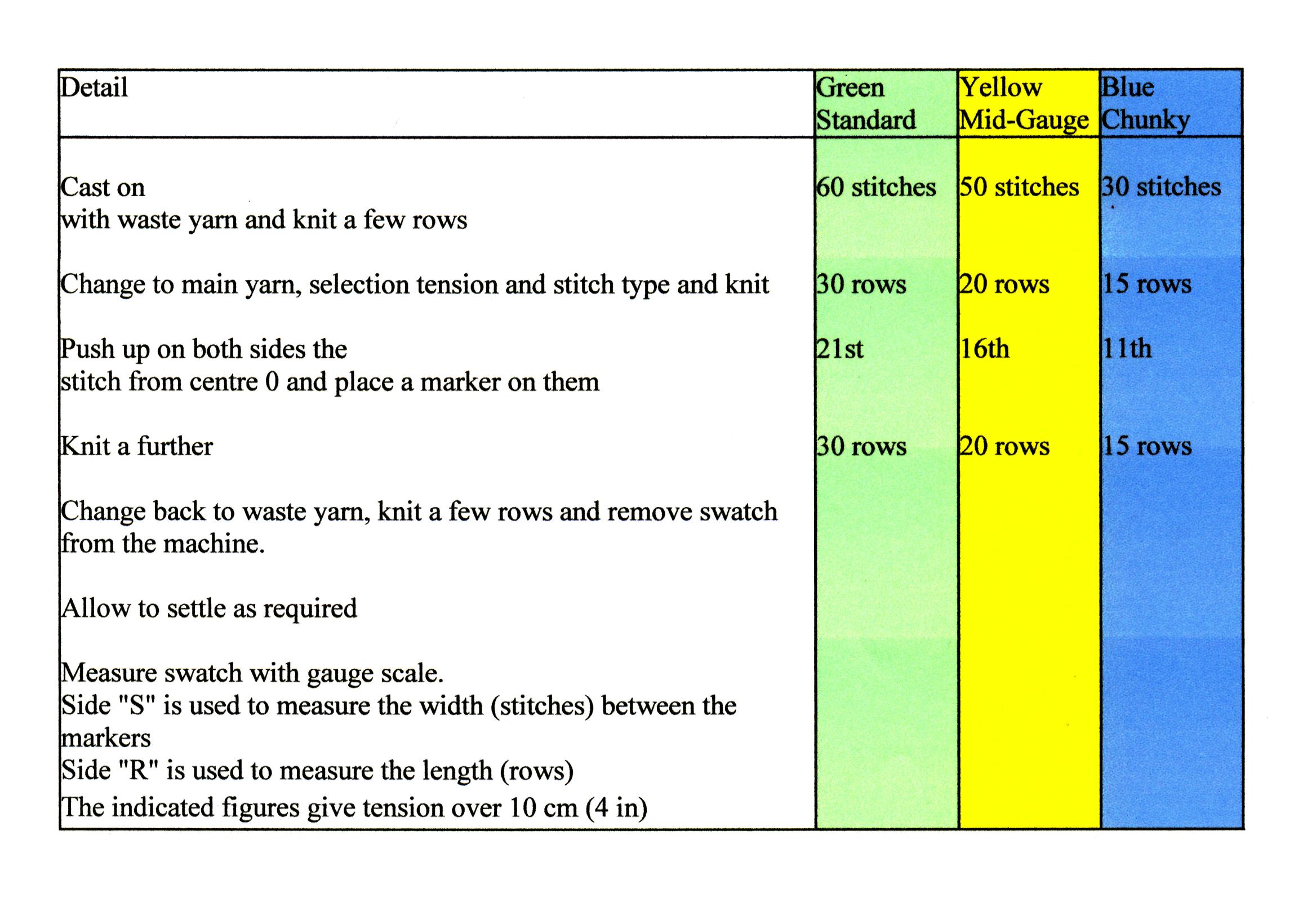Scrap value
Hi Anne
I’ve just come back to machine knitting after a long break and can you help, please? Years ago a guest speaker visited our club and used cast-on rags. (I’m sure she called them ‘rags’ but I might be wrong.) The club closed down a long time ago, so there’s no-one I can ask. Do you know how they are made? They seemed to make life really easy. Thanks for your help and a great magazine. Yours sincerely, Pat
Thanks for asking Pat and these strips do away, to a great extent, with the need for waste yarn. For beginners, the easy way is to find a bit of (dare we say) ‘rubbish’ yarn in your stash. It’s best to use a smooth yarn in a neutral colour.
Step 1 Cast on about 50 stitches, using the latch tool chain stitch method for a firm cast-on edge.
Step 2 Knit 10 or 12 rows at a fairly loose tension, finishing with one row at the loosest possible tension.
Step 3 Cast off round the gate pegs to make nice little ‘blocks’ at the cast-off edge.
Step 4 If you’ve a ribber cast-on comb and with the wrong side facing, you can push the teeth of the comb through the holes of the cast-on edge then insert the wire.
Step 5 If you don’t have a ribber, keep the wrong side of the strip facing you and start with a couple of needles at each side of centre 0, the centre of the strip and the cast-off edge. Either way and using a transfer tool, pull through a needle at each end then work across, bringing all the needles through the holes.
Step 6 Make sure all needles are in holding position with the machine set to knit them back.
Step 7 Place weights in position, if required.
Step 8 It’s now vitalto knit one row with a nylon cord at a large tension, or you won’t be able to separate the strip from the knitting.
Step 9 Push needles to holding position again and cast on using an e-wrap, latch tool chain or method needed for the garment.
Step 10 Remove the nylon cord when the work is completed and the strip is intact to use over and over again.
Strips (or rags) can be made in different lengths and widths. Short strips are useful for casting on a small number of stitches, as you can hang weights directly on the strip. Some knitters make their strips garment width with a hem, then insert a old Knitmaster welt bar (see Fig. 3 and Fig. 4) into the hem. This adds a little weight plus stability and Brother owners can hook on a cast-on comb. A cast-on strip can be the most useful bit of scrap knitting you’ll ever do, especially if you have an LK-150. Don’t, though, forget the row with the nylon cord or you’ll be unable to separate the strip from the knitting.
Kalamunda Krafts
Slightly more experienced knitters (in less of a hurry!) knit a bias strip. It has its own built-in loops that spread out nicely the more it’s used. Sally Butcher has a step-by-step video demo on her Facebook page, along with videos of techniques on Silver Reed SK280, LK150 and SK155 machines. Visit www.facebook.com/kalamundakrafts She’s also transferred some of the techniques to YouTube, the link is https://www.youtube.com/channel/UCSDxy6pQHAs4gd5XBztYWmw and it’s called Sally Butcher’s Kalamunda Krafts Machine Knitting.


